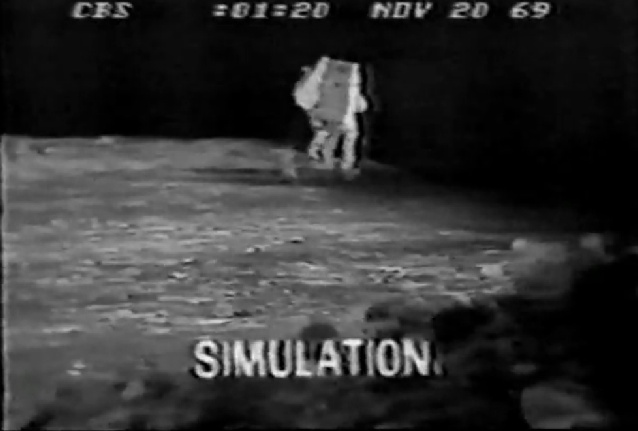4.4.0 - Apollo 12 Introduction
Despite launching only 5 months after arguably the most historic event in history, Apollo 12 is remarkable for being almost forgotten in the grand scheme of human achievement, and in popular memory it has neither the excitement and hope of Apollo 11 nor the drama of Apollo 13. Politically, Apollo was already being shaved back (missions had actually been cancelled before Apollo 11 had even taken off), and many people began to hold the view that there were more important and pressing problems on the home planet that could use the money being spent on the Apollo programme. After all, we had “been there, done that”. We'd made our point, why go again? Outside mainstream media, an article in counter-culture newspaper the LA Free Press is hugely critical of the media circus, corporate and military involvement, and the distraction from more serious issues that need addressing such as the Vietnam War. It also seems to concoct what appear to be entirely fictional academics stating that the Apollo flights (and indeed any lunar missions) were impossible!
It did, however, have the claim to fame of being the first mission to have a pinpoint landing. While Apollo 11 had a landing area within which the crew wanted to set down, the trajectories for Apollo 12 were calculated to put the LM in a very specific spot, something they achieved with sufficient skill and precision to allow them to rendezvous with a much earlier NASA experiment, the Surveyor III craft, which had landed in 1967 in a partially successful mission to sample & photograph lunar soil.
The Saturn V launched at 16:22 on 14/11/69, landing on the moon on 19/11/69. The crew stayed on the surface for 31.5 hours, re-uniting with the CSM on the 20th, and finally splashing down on the 24th.
The mission's main claims to fame are being hit by lightning at launch, and the failure of the colour TV camera, which was burnt out almost as soon as it was set up on the Moon by being pointed directly at the sun. This forced the US TV networks to hire actors on a set to perform the astronaut's roles to the recorded voices of the crew. It's ironic that while many accuse Apollo 11's lunar surface broadcasts of being performed by actors on a set, Apollo 12's actually were (figure 4.4.0.1).
Figure 4.4.0.1: Apollo 12 TV broadcast showing the acting out of mission audio. The video is obviously in a studio and bears no resemblance to the mission photographs. Source
They did, however, manage to take still images. During the mission they used 14 magazines of film to take 2119 images, the bulk of which are of the lunar surface (either from orbit or from the ground). Relatively few photographs exist of Earth once out of Earth orbit, and because of the mission's timing, significant numbers of these are of a crescent globe – much less of the surface is visible than in previous Apollo missions.
These photographs are available at the ALSJ & AIA, but for several the images used show an overexposed Earth. Where necessary, images have been obtained from the Gateway to Astronaut Earth Photography (GAP). Some high quality TIFF images are available at http://archive.org. TV screen captures will be used where available (see figure 4.4.1 for sample source).
As with Apollo 11, 3 satellites are available for comparison with these still images: ATS-3, Nimbus-3, and ESSA-9. ATS-3 images for the period covering Apollo 12 are in this document. NIMBUS-3 images can be found here: Source, and ESSA 9 here: Source. The same NIMBUS data recovery project that provided new images for Apollo 11 also furnished new photographs for Apollo 12, and they will be added where appropriate. High resolution strips from the NIMBUS-3 HRIR are also available, again from sources cited for Apollo 10 and 11.
There are also isolated examples of close-ups from these satellites, which allows better quality. This document contains a close up NIMBUS image of the Sahara desert from November 18th Best of NIMBUS, and this one shows a close up of New Zealand, also from November 18th and also from NIMBUS, New Zealand Journal of Marine and Freshwater Research . The Mariners Weather Log from January 1970 (Volume 14, Number 1) contains a more detailed image from ESSA of North America on the 21st of November Source) showing Hurricane Martha over Panama. An ATS-3 image is also included here. An image from landing day is in this 1973 publication.
As with other missions, all these images have been freely available in one form or another since they were taken, and if possible they will be included in the analysis here, proven yet again by the NIMBUS images taken during the mission shown in this publication, and by an amateur capture of a NIMBUS-3 image from here.
Now that some sort of context has been established, we can progress to looking at the photographs.

